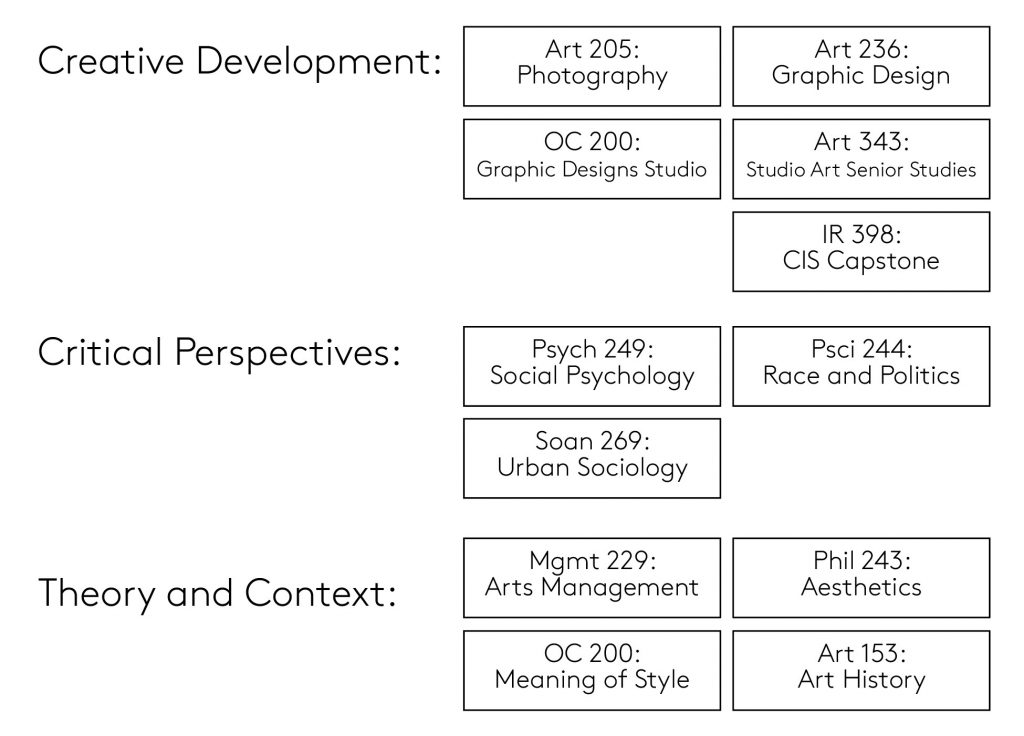MAJOR
“Graphic Design” refers to the process of creative problem solving, where intentional graphical decisions of form and function articulate a clear and specific message. This major draws upon different disciplines to provide an education in the technical craft and design ability of the student, as well as foster the critical perspectives necessary to communicate complex messages.
BREAKDOWN

The course selection is divided into three categories, colorized to distinguish them. The categories are as follows:
Creative Development: This category focuses on developing an arts perspective through a variety of classes that prioritize the technical craft of design. These skills develop a fluency and familiarity with the necessary mindsets and tools needed to find creative solutions.
Critical Perspectives: The courses in this category specialize in the awareness and impact of the designer, and incorporate the ethical implications design can have relating to psychology, race, and social theory. This enables moral design, aware of its value and potential.
Theory and Context: Courses in this category provide an in-depth cultural awareness and artistic context necessary to understand the placement and environment design will enter. This translates into a more informed designer, whose decisions are aware of the various factors that determine how visual communication is received.
RATIONALE
Curating a graphic design curriculum requires the collection of communication and creative problem solving skills and the technical ability to translate visual solutions to media. This major focuses on developing each of these skills as individual components, which are then applied in practice through art and design. Through this method of study, relevant courses can be traced back to a variety of disciplines, ranging from studio art to psychology, sociology, and management.
KEY QUESTIONS
- What makes graphics and visuals successful in an oversaturated platform such as social media?
- In what ways can good design re educate an already known concept?
- What are the roles and responsibilities of a designer in 2020?
- What is the balance between simplification and reduction? When does abstraction dilute a message, and when does it make it more dynamic?
- In what ways can physical media adapt and thrive in a technology forward entertainment sphere?
- How can the design thinking process be applied across disciplines to bring specificity, clarity, and simplicity to the delivery of complex messages?
